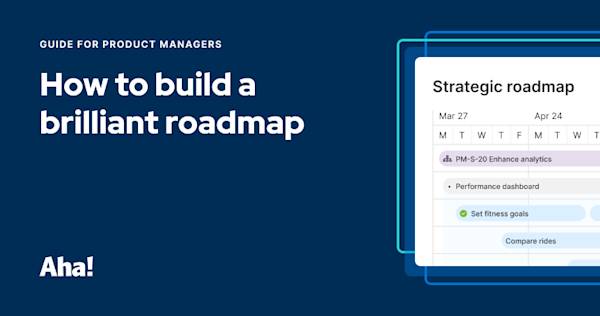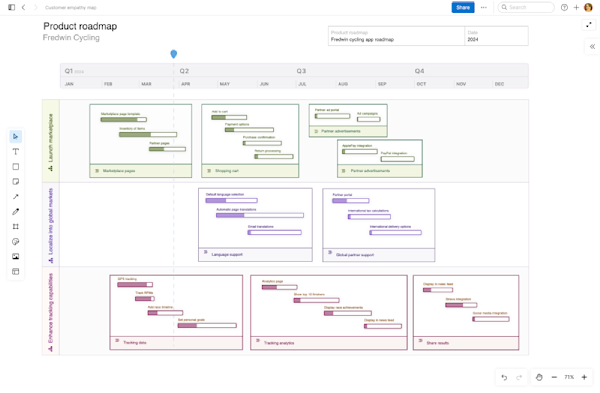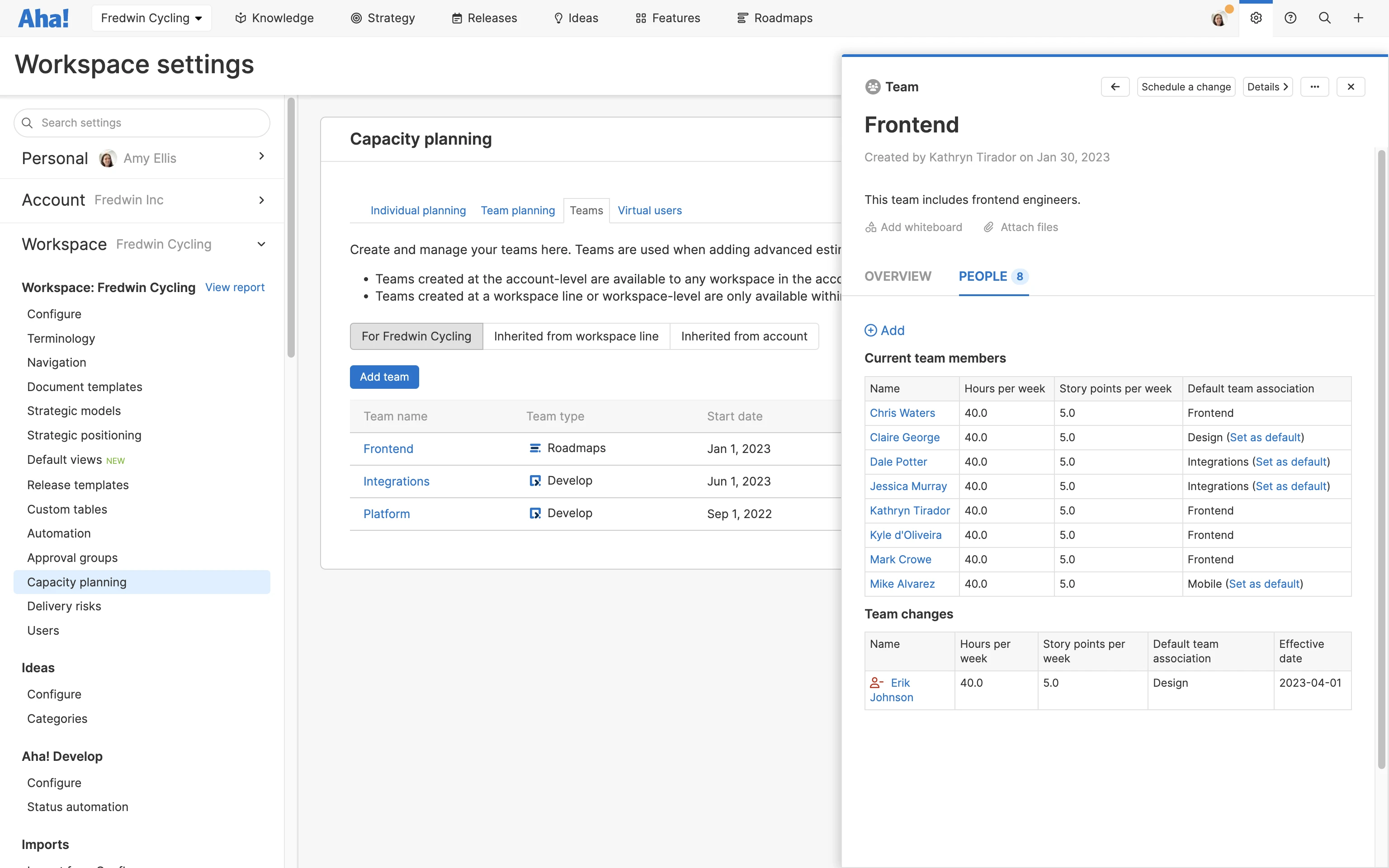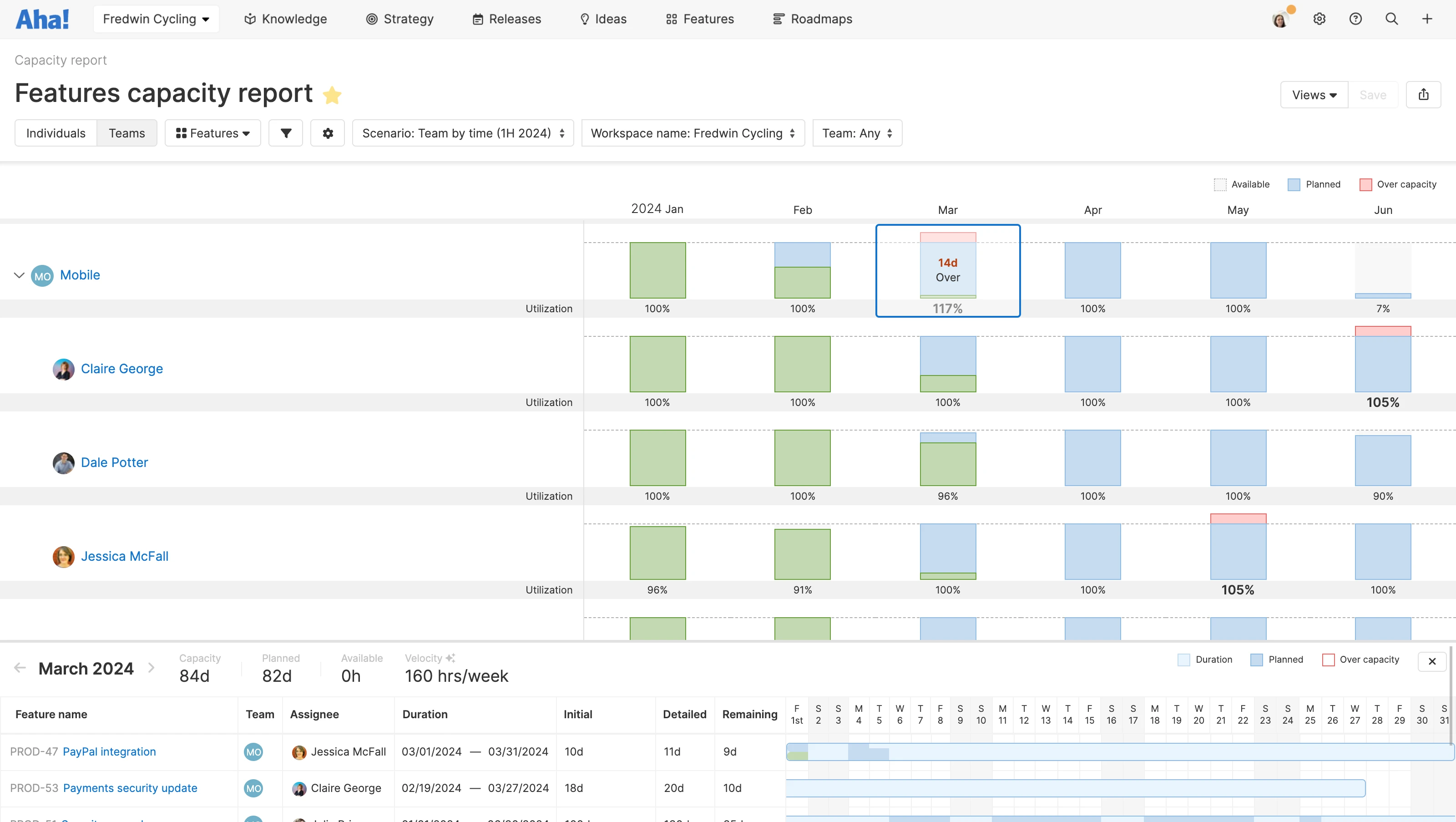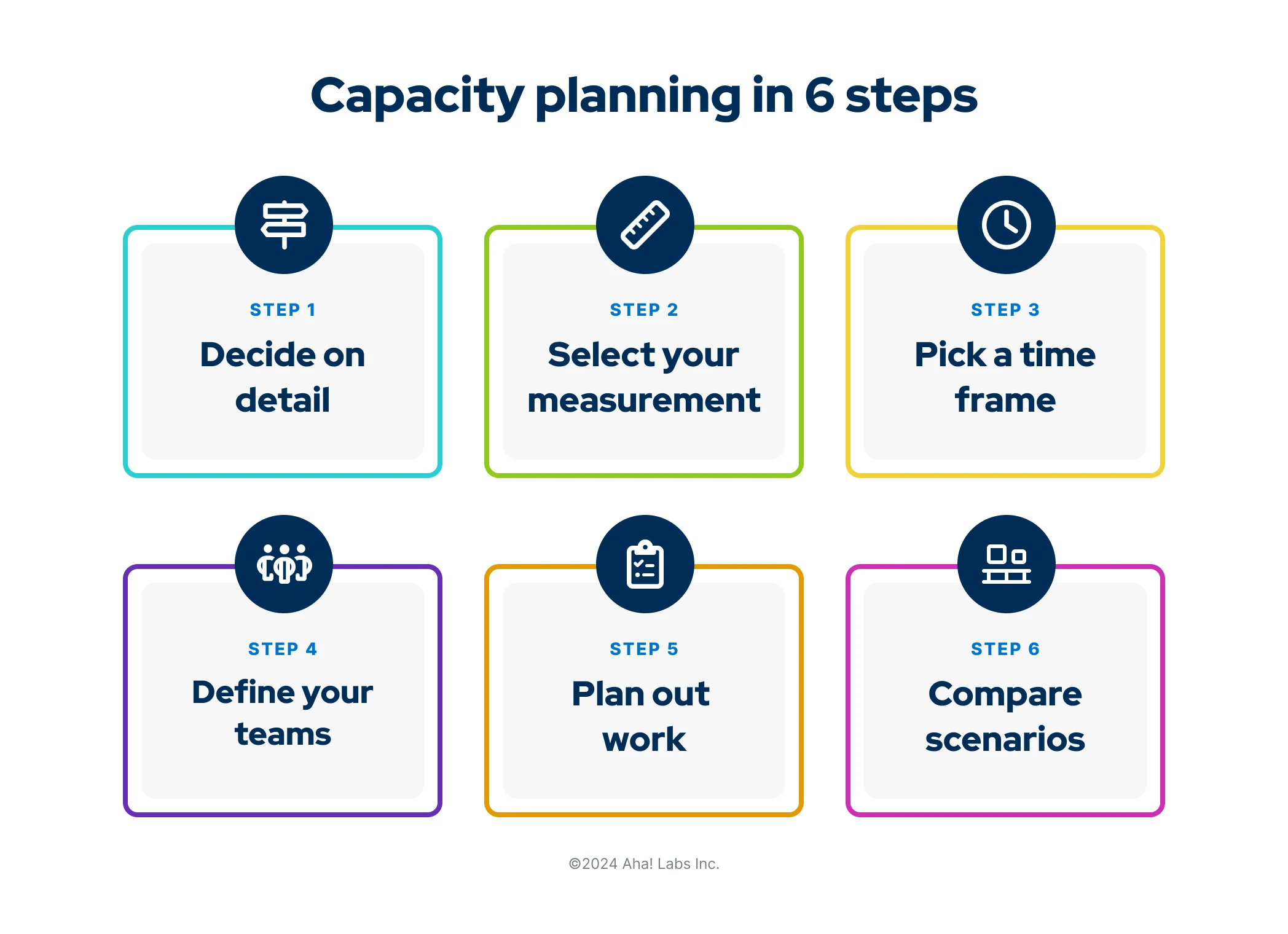Capacity planning for product managers
Last updated: September 2024
Capacity planning is the process of estimating work to be completed and comparing it to the team's availability. It is a critical part of translating product plans into reality.
Time and people. Product managers need to keep both in mind when planning what it will take to achieve the product roadmap. Capacity planning can help you accomplish this. During capacity planning, you estimate the effort required for upcoming work and weigh that against the cross-functional team's availability. The goal is to balance resources with the timing of your product plans — so everyone has a realistic workload and you can deliver what you say you will.
This might sound idealistic. Maybe you feel jaded at the thought of capacity planning. What is the point when plans will inevitably change? Why invest time in details that might become outdated or inaccurate?
But capacity planning is not about perfection. Your estimates will not be definitive — nor should they be (unless you can predict the future!). What matters is making the best prediction with the information you have and confirming or adjusting when needed. That way, team members can proceed with confidence and rally around one another to deliver on time.
Explore capacity reports in Aha! Roadmaps. Sign up for a free trial.
This guide will walk you through the benefits and challenges of capacity planning, with step-by-step instructions to get started. Use the following links to jump ahead to a specific section:
What is capacity planning?
Capacity planning is the process of estimating work to complete and comparing it to the team's availability. It helps you prioritize work that will add the most value to your customers and business — in a manageable way for the team.
During capacity planning, you are aiming to answer questions such as:
In what time frame can we complete the proposed development work?
What must we deliver for the required features to be lovable?
Do we need to make any scope adjustments to meet upcoming delivery dates?
Understanding everyone's availability to work on a new initiative or feature can occur at both the team and individual levels. Organizations might elect to capacity plan using one or both approaches, and the choice is typically dependent on company size, team structure, and roadmap complexity. Here are some key ways to differentiate between the two.
Definition | Product development phase | Best fit for | |
Team-based capacity planning | Enables you to estimate work by team and set plans based on each team’s availability | Helpful in the early stages of product planning and thinking through large chunks of work. You might not know who will do the work, but you know which teams will tackle it. | Large enterprise organizations with many strategic workstreams. You can align your plans with the capacity of each team to effectively allocate resources. |
Individual capacity planning | Helps you analyze and track the workload for individual team members at every level of your roadmap | Happens as you get closer to implementation and plan out the releases or critical features within a given time frame | Any size organization. For smaller organizations, estimating capacity at the individual level might be all that is required to ensure a realistic roadmap. |
Teams can measure effort in people, hours, cost, or story points over weeks, months, quarters, and so on. Your approach will vary based on several factors, such as the timeline for achieving your roadmap, team structure, and product development methodology. There is no right or wrong way to go about it if you gather inputs consistently across teams.
